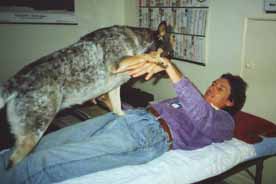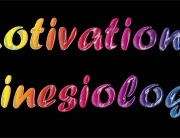Applied Kinesiology was created in the 1960’s by an American Chiropractor, George Goodheart. He pioneered way by of blending a mix of the muscle assessment work from Kendall and Kendall with aspects of Chinese medicine, esp. accupressure. Originally only available to a chiropractors, doctors and dentists, kinesiology slowly filtered into the wider community and by the 1970’s people like Dr. John Thie were teaching the secrets to lay people through systems such as Touch for Health.
As more people studied the different kinesiology techniques even more ways to use kinesiology were created. Within the natural health community Kinesiology was embraced and expanded, growing from weekend workshops to today’s full diploma courses. Entering the world of kinesiology in 1989, it has been interesting to watch the changes. Many of those from that time attended weekend workshops and taking it away, began applying the skills with friends and clients with truly amazing results.
More courses, more information and ways to bring about healing, now with a multitude of tools to do the same thing. The ability to use a technique that accesses the body’s own innate intelligence is one of the gifts of kinesiology. With muscle testing it is possible to access the underlying problem and the solution in the sequence best suited for the person. This is a key point, everyone heals in their own way, some go slow and beat around the bush, others want the fast track.
Whether attending a weekend workshop or undertaking full accredited diploma training, the results obtained may the same. I saw a video recently of Dr. John Thie, world renowned founder of Touch for Health, using the basic 14 muscle balance. With all the skills he would have amassed of the decades he goes back to the basics. Master the basics. It can be amazing how we can bring change into people’s lives. A suggestion would be to attend at least one weekend workshop, master it, then move on to the diploma if that excites you. Kinesiology is a useful tool for correcting issues such as hydration, oxygenation, ionisation, pain, stress and a multitude of other issues.
Put simply, in the right hands kinesiology is a powerful tool for rebalancing the body’ s energy systems. It also helps us to understand what may be behind the issues and health problems we may be having. Many of the kinesiology techniques have a wholistic view and balance the physical, mental, emotional and spiritual. Others focus on specific areas, such as learning, the physical body, etc. There will be one or more that addresses areas they we may be interested in.
An advantage of muscle testing is that when someone is doing it for us we feel the change. If anterior deltoid is tested we feel it when the muscle unlocks and we can no longer hold it up. After the correction we can also feel the difference when we can now hold it with little effort.
After 25 odd years i still enjoy learning new ways to apply the basics and see people walk out pain free, less stressed and sometimes a little surprised how easily their long term conditions reduced or disappeared all together.
I spoke with a woman recently who i dod a sciatica correction for 15 years ago and it had never come back.
Another woman rang to tell me she could now drive her car as her vision had improved so much. (She used kinesiology and natural vision techniques)
I have seen a woman terrified of frogs be able to al least look at one without having a breathing attack.
It has worked to help dogs, horses, cats and even been applied to a stressed gold fish.
Clients have been able to shift stubborn mental/emotional blocks and one client stopped trying to commit suicide.
Kinesiology has so many varied and wide applications, it is a wonderful tool in it’s own right as as an adjunct to any other modality. Motivational Kinesiology is my preferred option, and as mentioned all kinesiology techniques are wonderful.






Leave A Comment
You must be logged in to post a comment.